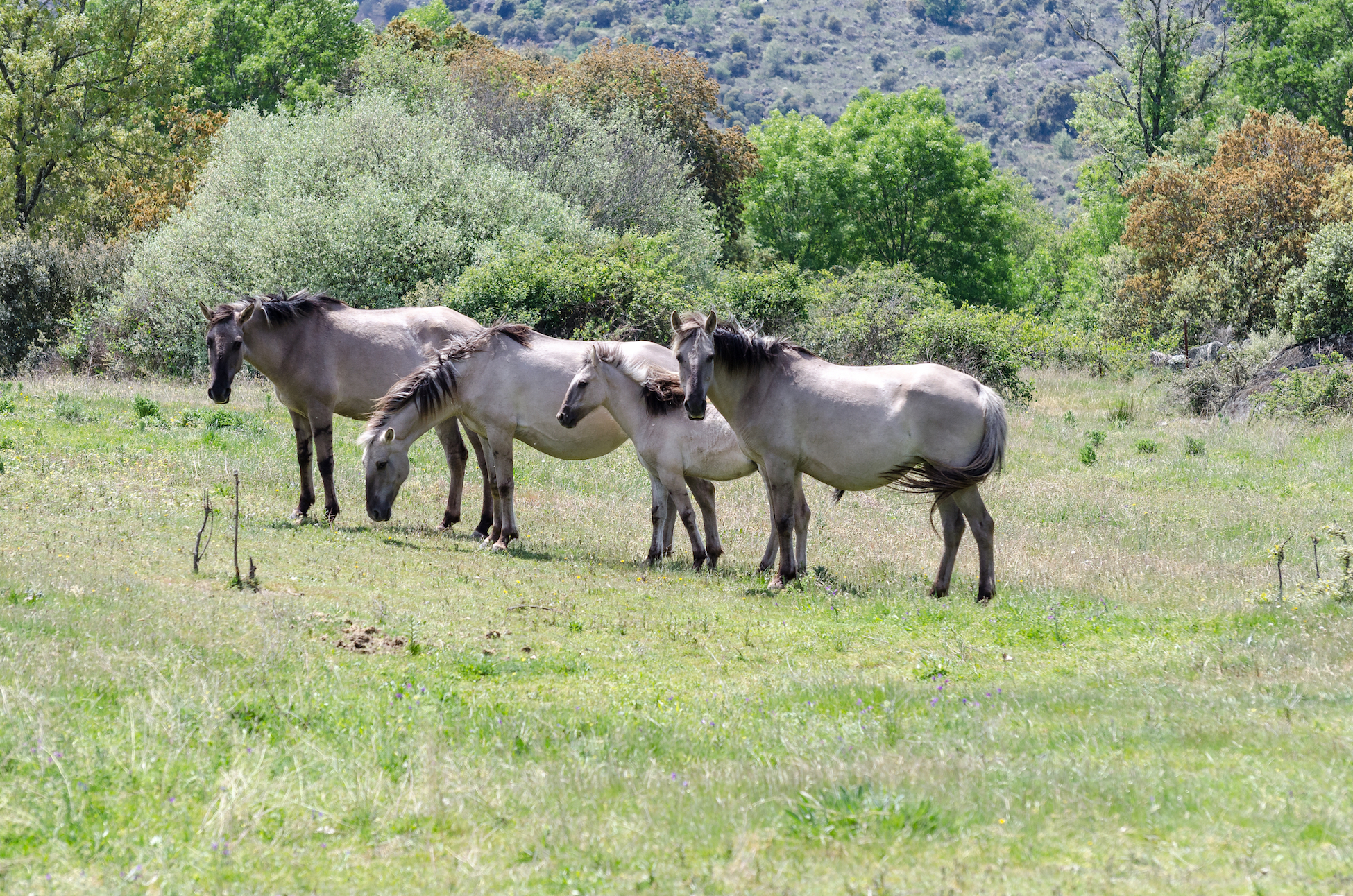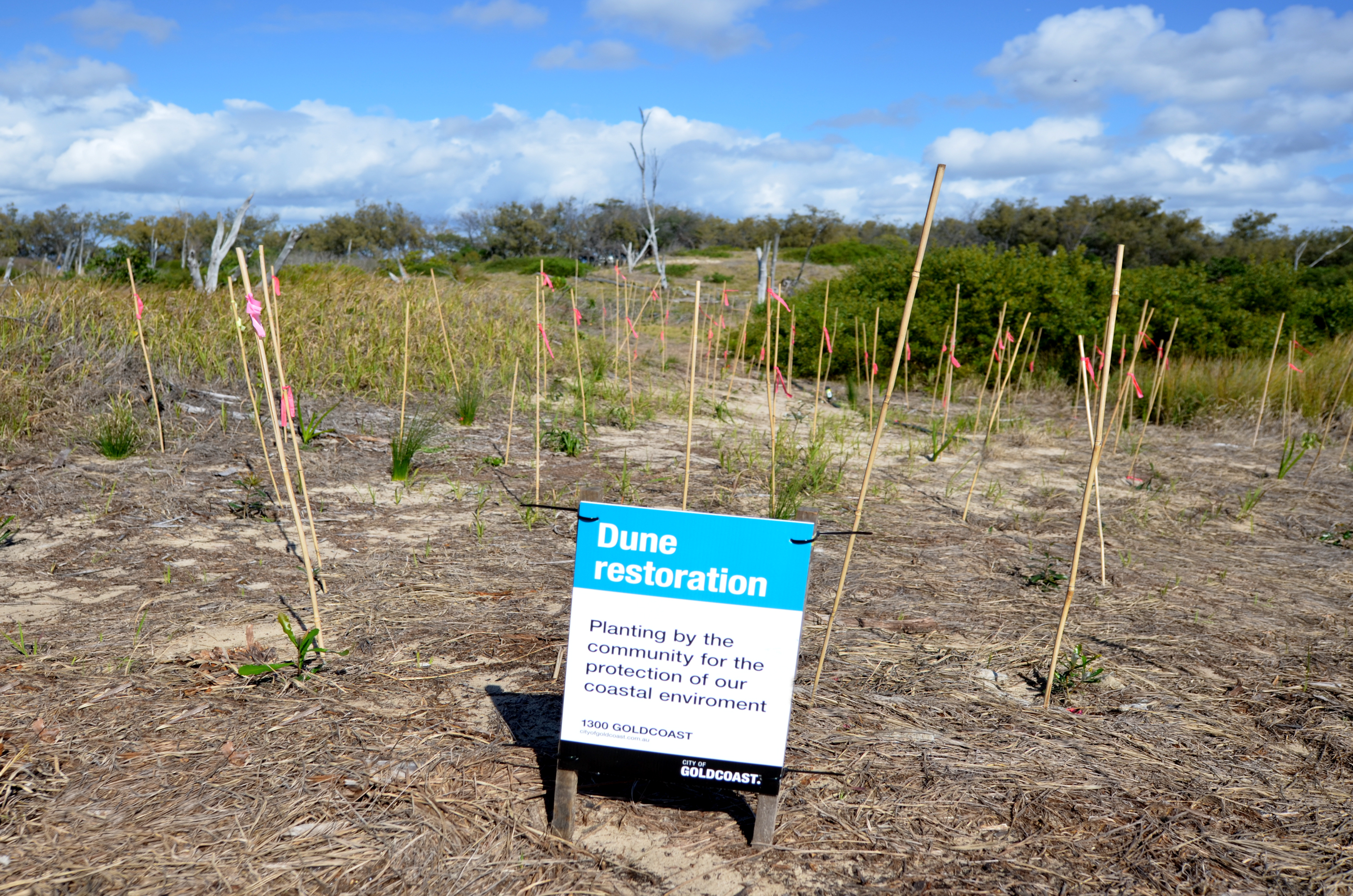Humans have been degrading ecosystems since the dawn of humanity. There's evidence of decline and the loss of Africa’s megafauna from when humans first evolved on the continent. As humans expanded across Eurasia, there’s evidence of extinctions of large animals. Likewise, as humans moved into the Americas, there was a mass extinction. The same is true of Australia 60,000 years ago.
In other words, humans have affected the biosphere throughout human history, and this has intensified over time. As agricultural civilisations expanded, for instance, they pushed ecosystems further back, causing further extinctions. As people settled on islands, there was a massive extinction of the unique biodiversity that had evolved on those islands. More recently, in the 20th century, we've experienced an industrial expansion into agricultural frontiers in some of the world's most biodiverse regions, such as the tropics.
Nevertheless, it isn't easy to establish what the baseline is for the natural world. If I go for a walk around the countryside, for example, I fixate on what's happened over the last 20 years: there’s been a decline of songbirds, insects, etc., through the intensification of agriculture.
However, if I think back a few hundred years in the UK, there would have been more wild creatures. A thousand years ago, perhaps there would be wild boar or even wolves in parts of the UK. At the last interglacial period, there would have been elephants, hippopotamus, and several other creatures.
Missing the richness of nature
In other words, our perception of what is wild shifts over time. Many people likely consider the Lake District or the Welsh Highlands to be wildlands. After all, these areas are nice and provide an escape from dense urban centres. Yet, from an ecological or paleoecological perspective, much of the world we're living in lacks much of the biodiversity and ecosystem function it historically supported.
On the smallest time scale, there's a lot of evidence that the UK of the 1970s and 1980s had many more insects and birdlife than now. Yet, this evidence is all anecdotal because no one monitors insects, but instead, there are reports of bug splatter on cars throughout the 1970s, which is a much rarer occurrence now.
No one noticed this change because each generation grows up with only the perspective of its childhood and what was in that ecosystem then. Nevertheless, this loss of natural richness is quite profound. There are indications that loss will continue over the coming centuries, both because of habitat loss due to agriculture and because of climate change.
Can we reverse climate change?
At the same time, there is also an opportunity to limit the decline of Earth's biosphere. That opportunity occurs for a range of reasons. As rural populations move into cities, more marginal agricultural lands tend to become less viable. Sometimes we're locked into farming those landscapes because they have cultural value, but there is the potential to reverse the decline in these areas and restore the natural ecosystem.
However, these areas will never fully return to a past state. Extinction prevents that, although it remains possible to make these ecosystems more vibrant. This renewal can also occur in heavily deforested regions, such as Europe. This opportunity exists even though the degradation of the European landscape occurred over centuries or millennia. The same is also true of North America.
At the same time, in the tropics, there is ongoing deforestation resulting in the loss of many rich, biodiverse habitats. Still, the same processes are occurring whereby some agricultural lands are being abandoned. These areas, too, are prime candidates for restoration.
Working to preserve
Much of my work has been in the tropics. I've primarily been concerned with deforestation and preserving tropical ecosystems. One refrain that always comes when I'm working in the tropics is, ‘Why are you so concerned about these faraway places when your own home country is amongst the most deforested landscapes on Earth? If you, the Europeans, have deforested much of your land to industrialise and develop, now it is time for the South Americans or the Africans to do the same.’
Yet, I contest that there are pathways to becoming a prosperous society other than drawing down on a country's biological wealth. Regardless, another response is to start acting in our home countries, like in Europe, to reverse the decline in biodiversity while recognising that our tropical friends have a point.
There are many ways to restore degraded landscapes. At the simplest level, we can plant trees in degraded agricultural landscapes or pasture lands. At the other end of the scale, we can reintroduce larger animals that are currently missing. In principle, this could be animals like wild cattle, wolves, or wild boars. Not all animals can live just anywhere, but we can start thinking about this more ambitious action in some places. This type of activity is sometimes referred to as "rewilding."
Rewilding is a contentious term. Some people don't like it because it's considered overly-romantic. However, to others, it encompasses a different way of looking at nature. Rather than trying to preserve pockets of nature in little islands under a climate that is changing rapidly, affecting where species can exist, rewilding looks to expand nature and have nature coexist with our landscapes. This can be achieved by restoring pockets of land, but also by reconsidering agricultural land. For example, can there be more biodiversity and agricultural land by having more wildflowers on the margins of lands? Can marginal agricultural land such as sheep pastures, etc., be encouraged to return to a semi-natural state?
Rewilding systems can also run to their rhythm, which is a benefit of the practice over simply restoring nature with particular targets in mind. Rewilding encourages natural processes like the cycling of water and carbon storage to come back to heterogeneous landscapes.
Restoration: pitfalls and best practices
Nevertheless, one of the things to be wary of with restoration is an obsession with trees. Everyone likes trees. You can plant a tree, and there's something concrete that tells you what you've done. You can have a target of planting 100 trees somewhere, and that's a clear concrete target that’s beneficial in a lot of ways. Trees also support a lot of biodiversity. They store carbon, they provide flood protection, and they provide many goods.
However, there is also a danger in overplanting trees. For instance, many ecosystems of the Earth are not naturally rich in trees. Examples are natural flower meadows grazed by either domestic animals or, in the past, by wild animals. Those animals would have kept out trees. There are also Africa's savannas with vast amounts of wildlife and biodiversity that depend on an open, sun-loving ecosystem. There, grasses can catch the sun’s ray and provide all the nutrition and food that the entire complex ecosystems of savannas can thrive on.
There's also a danger in the thought that trees are a stand-in for carbon. The idea is that natural ecosystems like trees absorb and hold carbon. Therefore, if we want to slow down climate change, we need more trees to store that carbon.
Yet, trees don’t belong in every ecosystem. For example, the semiarid landscapes of Africa and the peatlands of Scotland. These rich ecosystems store lots of carbon in their soil. If you plant trees on peatlands, you drain them. You remove water from the peat soils, oxidise those soils, and release carbon into the atmosphere. So, there's a danger in harming biodiversity by only focusing on the carbon stored in tree biomass. In some cases, this could increase overall carbon emissions.
Just one part of the solution
Furthermore, while restoring the biosphere can certainly help slow down climate change, restorative measures shouldn't be seen as an excuse not to tackle the fundamental climate change problem, combustion and emissions from fossil fuel. Some of our calculations suggest that even the most ambitious biosphere protection programs could only avoid around 15 to 20% of total climate change.
While that’s substantial, it's only part of the solution. However, there is a moral hazard in focusing on the biosphere that it excuses business as usual. It's also quite telling when, for example, the president of the United States, who hasn't been actively dealing with climate change, says he loves trees and wants to see a trillion trees planted.
Similarly, it’s possible to imagine others embracing offsetting programs. If the aviation industry carries on flying and emitting carbon and simply tries to compensate for this by contributing to a tree planting scheme, that doesn't tackle the fundamental issue of moving toward a zero-carbon world.
Overall, I'm all in favour of trees. I love trees. I want to see an expansion of restoration. Still, we also have to be aware of the danger of relying on trees to do something that an expanded tree cover cannot sufficiently do.
The time frame of success
Restoration processes can be successful on various timescales, and it depends on what the target is overall. If the target surrounds biodiversity, often restoration projects can start easing the pressure on the land. In these cases, you can see nature bounce back surprisingly quickly. Within a year or two, you can start seeing the benefits of restoration.
On the other hand, more ambitious targets — significant carbon absorption, for example — involve a longer time scale of maybe 10 or 20 years before you start seeing substantial impacts. Finally, if your target is returning ecosystems to a richer past state, that can take half a century or longer.
Overall, how long restoration takes to yield benefits depends on the desired outcome. Ideally, restoration programs will incorporate a mixture of short- and long-term benefits. That way, there are immediate benefits within a few years, while long-term benefits accrue over decades or longer.
What’s the cost?
An area of land can be relatively inexpensive to restore in some cases, but there are often even cheaper options. One is to actively plant trees, for example, if you're trying to return farmland into a forest. The other such option is to allow natural regeneration to take place and leave that land alone. It may take longer for a system to come back under these passive conditions, but it may become a richer and more biodiverse system. On the other hand, an alternative is to have a much more active, intensive management process where you're trying to remove invasive species, for example, and have a real targeted approach.
All of these strategies have different costs. If there is a lot of labour involved, the price may be higher. We must also consider the opportunity cost. Natural regeneration, for instance, does not require much labour. However, the highest cost of natural regeneration is the lost opportunity. If you're working with an active agricultural land area with real financial value, turning that land into a forest with a much lower financial value is probably the most expensive strategy.
In general, the first thing to do is to identify low-hanging fruit, land that has low financial value, where the opportunity cost of converting it into a forest is also low. These landscapes can be prioritised over prime agricultural land, and that implies huge value and opportunity cost.
How can we do it?
We can make these changes through a variety of mechanisms. One mechanism that has gathered a lot of attention is increasing the carbon value of ecosystems. By increasing the amount of carbon in an area, ecosystems can contribute to slowing down climate change.
There are also international mechanisms toward this end, for example, funds for tropical countries to slow down rates of deforestation or funds for afforestation. However, international mechanisms can be complicated. Some have taken decades to yield results. Some mechanisms avoid this issue by operating on a subnational level. The state of California, for instance, has reached agreements with several states in tropical countries to contribute to forest protection and restoration in those countries as part of its target for reducing carbon emissions.
While carbon provides one mechanism, it is not appropriate that ecosystems are seen as banks of carbon to be maximised. Instead, we should see this as a potential tool that can leverage all the other benefits that ecosystems provide in terms of richness of nature and biodiversity.
There's also an increasing interest in watershed value around ecosystems. More specifically, how protecting or restoring ecosystems can reduce flood risk and improve water quality downstream. The most iconic example of this is the watershed of New York City that extends north into the Catskill Mountains. A few decades ago, when New York was looking at putting in a new water cleaning plant, they did a valuation and realised it was cheaper and more effective to restore and protect the Catskill watershed and the surrounding forests than to build a new plant. This is a classic example of the financial value of nature's services that can be harvested by working with nature.
I think we are at a crunch point in terms of how we deal with the biosphere. Unfortunately, the intensity of pressure on the biosphere is increasing in many parts of the world. Deforestation rates continue to be high, and they are coupled with climate change and other harmful factors.
Nevertheless, there are also reasons for optimism. We're starting to see a resurgence of interest in ecosystem restoration and a recognition of the value of nature. More people are also working out how to live sustainably and confronting the environmental challenges of the 21st century. There is also significant interest in the potential of restoring nature to meet our climate change mitigation goals by the middle of the century.
Indeed, there's everything to fight for. I think this is a crucial time to engage with this issue. There are tremendous opportunities. More importantly, there are also enormous risks that we won't be able to tackle this problem, and we'll see this ongoing loss and degradation of nature.
If you ask me personally, am I optimistic? I think you have to be optimistic. We can't afford to be pessimistic. There's no point. We have to recognise the opportunities, and we have to work with them and do our best to get the natural world through the bottleneck of the early 21st century.



